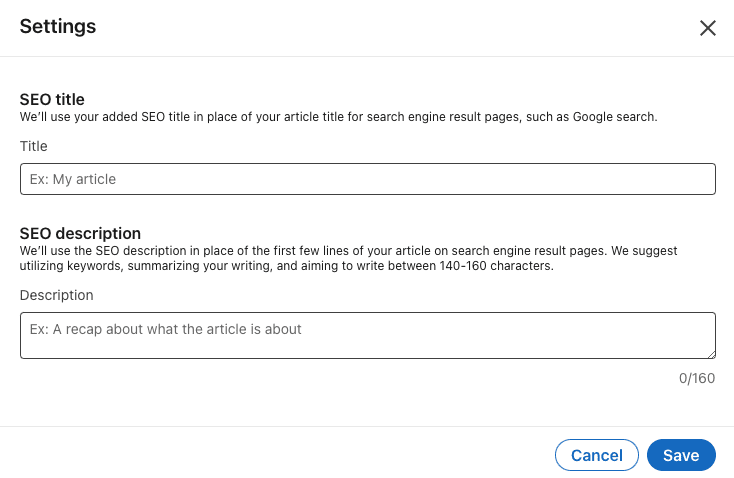
How Text-Based Social Posts Can Improve SEO for Your Brand
Thursday 23rd May
 by Beth Perrin
by Beth Perrin
Share
In recent years, social media posts that revolve around visuals have undoubtedly dominated the marketing space - videos, Reels, TikToks, photos and image carousels. But lately, another form of content has seen a surprising rise in popularity: text-based posts. We’re seeing a return to simplicity, wherein people prefer straightforward communication, and with text-based posts being easy to create and understand, without the need for specialised tools or software, they’re accessible to everyone.
In today’s digital age, the vast array of content styles we’re shown 24/7 can be overwhelming, which is why infographics, GIFs and videos can sometimes add to the feeling of information overload - despite being visually appealing. When done well, text-based content provides clarity and structure, and can offer a welcome break from other forms of media. It’s also great for SEO purposes, as search engines naturally love text. Let’s find out how text-based posts can aid your searchability online.
What is SEO?
SEO stands for Search Engine Optimisation and refers to the process of making your brand as discoverable as possible on platforms like Google (which is accountable for 93% of global web traffic!), Bing and Yahoo, so that prospective customers, clients and fans can find it amongst the crowd of competitors. SEO mainly involves optimising the content on your website, however it also includes some other elements that aren’t part of your site but still have an impact on your digital discoverability.
Social Media: Off-Page Optimisation
SEO involves 3 core components: Technical optimisation, on-page optimisation and off-page optimisation.
• Technical optimisation refers to the ‘behind-the-scenes’ processes that are needed to make your website perform well, such as minimising its loading speed, improving navigability, fixing broken links and increasing mobile-friendliness.
• On-page optimisation means adding title tags and meta descriptions to your pages, incorporating the right keywords, adding alt text to images and correctly structuring your page URLs.
• Off-page optimisation means enhancing your website’s ranking by conducting tasks outside of the site itself, such as earning backlinks.
Your social media presence falls into the off-page optimisation category, as it’s obviously not part of your website, but can still be used to drive traffic and raise brand awareness, via the incorporation of relevant keywords and phrases.
Which Keywords to Include in Your Social Content
Keyword research involves finding out which words and phrases your potential customers are commonly entering into search engines and social media search bars to find businesses, products and services like yours. After this, you can ensure you’re using these keywords abundantly throughout your content, ultimately increasing your chances of appearing in the SERP (search engine results page) when someone searches for one of them.
Start by making a list of broad but relevant topics based on your business - these could be your products, services, collections and offers. Here at 3sixfive, for example, we would include terms like “social media agency”, “community management”, “sentiment analysis” and “customer service”, as these explain what we are and what we do. Then, brainstorm some additional keyword phrases that come under each of these topic brackets. These are called long-tail keywords, and can include questions, such as “Why is community management necessary for brands?” and “Can I outsource my social media customer service?”.
Next, take a look at the monthly search volume for each of your keywords to see how common each one is, and therefore how much value it has to your target audience. There are plenty of free online tools where you can access this data, such as Searchvolume.io and Wordstream. Search volumes are constantly changing, so make sure to monitor yours regularly to keep up with evolving trends.
Bear in mind that the shorter the keyword, the higher its search volume is likely to be, making it more competitive - aka, lots of results will appear when this term is searched for. Naturally, medium-tail keywords tend to be moderately competitive, and long-tail keywords are generally less competitive. Fewer people are searching for these, but you’re more likely to rank, due to their high specificity.
Backlinks
Unlike Reels, TikToks and Instagram posts, text-based social posts can include links to your website, which, in the SEO world, are known as backlinks. Any external links that point to your website - whether that’s to your blog, store, contact page or even just your homepage - are viewed positively by search engines, as they suggest that your site is trustworthy and contains valuable, link-worthy content. In fact, websites that rank #1 on Google have 3.8x more backlinks than the rest of the top 10 sites.
It’s a good idea to use a URL shortener like Bitly or TinyURL when including links in your social posts, as these will make your content look tidier and more concise. Long links can overwhelm your posts and may appear spammy, making people less likely to click on them - plus they can eat into your character limit on platforms that have length restrictions in place, like X.
LinkedIn Articles
LinkedIn has a built-in article publishing feature which is another great way to create text-based posts, particularly long-form ones. These tend to perform well in search engine results, and back in February last year, the platform even added the option to customise the SEO titles and descriptions of your articles to make them even easier to find. To do so, simply open one of your articles on LinkedIn, click on ‘Edit article’, then choose ‘SEO settings’ from the ‘Manage’ dropdown menu in the top right. Here, you’ll see the following options:

Summary
There’s no denying that well-optimised, quality written content can boost your brand’s visibility on platforms like Google and make it easier for people to find both your website and your social media pages. While it is of course still important to create visual content like images, graphics and videos, you should also make space for some text-based posts within your strategy in order to make the most of what they can offer. Never underestimate the lasting power of written words and the opportunities they present for genuine communication and stronger connections with your audience.








